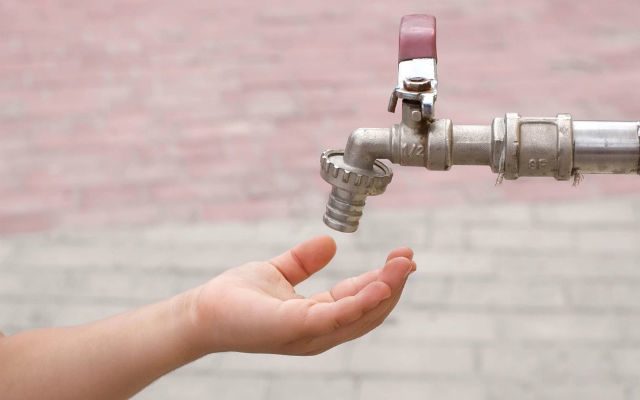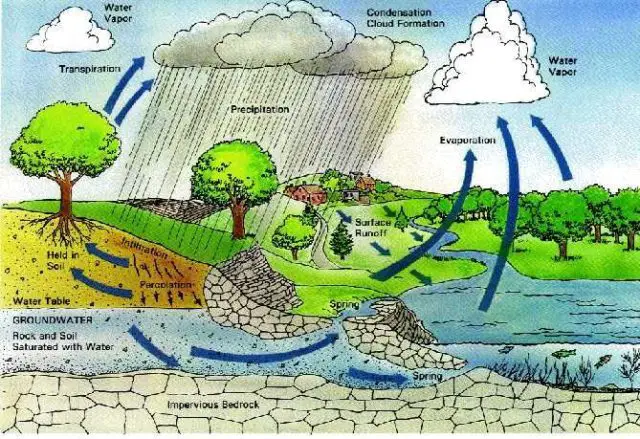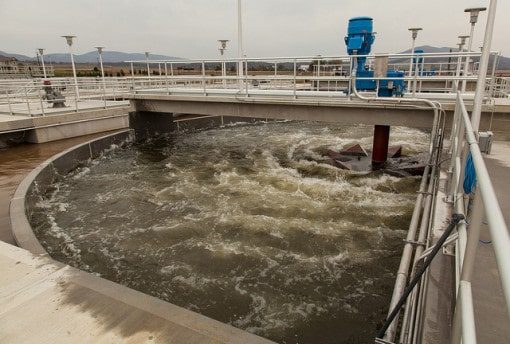The relationship between water and the human being has been an abusive, toxic and highly contradictory relationship. It is unheard of, but with our actions, we have devastated the planet. The violence unleashed against natural life has caused resources to be exhausted little by little.

For decades, society has lived under the umbrella of excessive consumption without thinking about what it was and is fundamental to preserve, to take care of. Today, the world is in check and is debating in a real crossroads to reverse what for years the human being has caused. The global shortage of water is imminent.
Considered as the best indicator of the degree of social and economic development of a country, water is the engine under which life is sustained. Its conservation and quality are linked practically to all economic and social activities, especially the health of the population. It is estimated that 80% of the world’s diseases are due to problems related to water resources.
Due to the importance, it has for health, the adequate management of water resources requires and needs prompt solutions to alleviate the challenges in this new century.
Deforestation, pollution of rivers, forests and soils, waste management, excessive use of water, lack of awareness, excess infrastructure, wastewater management, became a tsunami of inconveniences that, today, affects this precious resource, aside from the conflicts for wanting to seize something that is a universal right.
These problems of rights, interests, and public policies are old. Regardless of the various situations that surround it, water must be preserved. In the case of our country, many studies and reports have pointed out the emergency situation that could be unleashed if the necessary provisions were not taken.
Water supply is in crisis: current situation
In the opinion of several specialists consulted, one of the causes of the deterioration of the water quality is the little attention given to the problem of wastewater in urban areas, where ditches and streams are used as recipients of such pollution.
This was pointed out at the time by the State of the Nation Program (2003 Report), which although it is already years old, raised a voice warning of what was to come: “Our country will face a water emergency in the coming years if it is not they take the necessary measures to avoid it. And that information is, at this moment, of old data already. An important aspect is that there is concern about the supply of water, which is why inventories have been made of the water supply, but without considering pollution. So, we are talking about amounts of water, but we are not saying if that water is suitable for human consumption, or is highly contaminated”, says the specialist in this topic, and professor of the Technological Institute of Costa Rica (TEC), Dr. Guillermo Calvo Brenes.
According to the specialist, for years, government institutions have been interested in increasing the coverage of water for human consumption and there has been an important lag in the sanitary sewer system. Basically, in this issue, almost 1.6% of the budget has been spent in previous years.
In addition, the availability of water has other important aspects, because it is talked about a nationwide level, but the quantity varies in different zones. In Heredia, for example, there may be high availability of water and in Guanacaste, there is a tremendous shortage. Then, when talking about availability, you are not seeing in detail how it is in each region.
“It is important to know that the recharge of aquifers occurs by infiltration. The rainwater that falls has to permeate towards the subsoil to recharge it. If we eliminate forest if, for example, we urbanize lands that were previously used in agriculture, then we are waterproofing the soil and the rainwater that falls does not infiltrate but ends up going to the rivers and from there to the sea. Then, on the one hand, that runoff, that heavy rain, what it carries are pollutants. And it becomes water that we cannot take advantage of and when ending up in rivers, there is not a good recharge of aquifers”, emphasizes Dr. Calvo Brenes.

For experts, another important point to consider is climate change. The increase in temperature causes the flow rates to decrease so that there will be less water.
“There is also talk that climate change has caused a change in rainfall patterns, that is why we see very focused rains. In the Heredia area, we usually see very heavy downpours, in the Metropolitan Area, for very short times and on the other hand very strong droughts in the Guanacaste area. This variation, high temperature, low flow and a change in precipitation patterns, implies pollution of rivers, floods, water scarcity, which also affects electricity generation; there are effects of runoff, which leads to pollutants that go directly to the rivers”, adds Calvo Brenes.
“In the groundwater, in some places, we are spending more than what is available. In Guanacaste there is a shortage, there is a lot of contaminated surface water and the aquifers also show that contamination”, warns Calvo.
“Then, the previous thing caused that in the dry station there were many cuts of the service of water in several points of the country, that as far as I remember never had given, unless it was for maintenance; But scarcity worries, because it shows that our water availability is decreasing”, adds the water expert.
What has happened?
In 1970, it was said that the country had availability per person of 55 thousand cubic meters. Later, for 1996 it was said that 30 thousand cubic meters, and for the year 2020, an amount of 19 thousand cubic meters was expected. So according to that data, we are running out of the water, says Calvo Brenes.
Then, for 2016, another study on the availability of water per capita by country came out, noting that Costa Rica had availability, for 2016, of 31,300 cubic meters per person per year.
In that same information, it is said that the USA has an availability of 9 thousand cubic meters per person, per year; Mexico of 3,500, and Israel of 97; that shows the differences between countries in terms of water availability. “Apparently, the country has a great availability of water. According to the FAO, in 2015, the demand for water per capita was 482 cubic meters per year, for agricultural use, for municipal use, and for industrial use, there is a feeling that we have water everywhere and people do not worry about that.
But, on the other hand, as I mentioned at the beginning, one thing is to have water that can be drunk and another that cannot; and that varies the figures. When there is contaminated water, there are contaminants that cannot be eliminated and others that can, but it is very expensive.
In the end, polluted water does not leave us many options. So, apparently we have a lot of water and what we need is relatively little, but that amount must have certain characteristics, not all of the availability that is there provides it. On the other hand, those studies of water capital that have been done in the past, are showing that there is a decrease”, says the TEC expert.
An important fact that indicates that 2016 study is that 60% of the water that supplies Costa Rica is underground, and in the State of the Nation in 2009 the particular case of the aquifer of Barva and Colima is mentioned, where it is indicated that the calculated recharge of that aquifer was 9720 liters per second, and the calculated extraction between legal and illegal wells was 9,870 liters per second.
What does that involve? Well, a deficit. So, if we depend on around 60% of underground sources and we are extracting more water than the one that is recharged, at some point we will have a decrease, adds the TEC water expert.
“Most rivers are contaminated with physical-chemical and microbiological contaminants. Recently, we have done studies and found contamination with heavy metals and it is unknown, on the other hand, the magnitude of contamination by pesticides and herbicides; in that nothing has been done”, explains Calvo Brenes.
The case of the Barva-Colima aquifer is very important in that area around Heredia because of the supply. So, according to the studies, over time such availability decreases.
“I am not sure of the way in which such studies are done, for example, to determine the amount of water available in an aquifer; that type of analysis is complex and are, basically estimates. But, at some point, it can be exhausted. Another important aspect with respect to availability is the case of some wells in Guanacaste, which had to be closed because they had a very strong arsenic content”, he points out. In his opinion, our availability of water, either by reduction of contamination, is becoming less and less.
Insufficient efforts
For the specialist, the central government and its institutions have been more concerned with providing drinking water to the last corner of the country, and have neglected the treatment of domestic wastewater, which represents a very large volume of pollutants that flow into rivers and towards the sea.
Until recently, the country has its treatment plant, while Nicaragua, Panama, and other countries in the region already have plants for some time.
What happened?
They tried to pass that responsibility on to the builders of developments so that the companies had to build plants that were in charge of the same neighborhood.
The above, according to Calvo, is an error, because the operation of the treatment plants is very delicate, requires care, knowledge, because it is a microbiological process, that if you do not take care of the case, the microorganisms die and then the Plant stops working. On the other hand, it requires relatively constant vigilance and care.

“I think that no particular community would be willing to pay a person to be aware, in a manner ad honorem, of that situation, so I think that has been a resounding failure. I think the government has evaded its responsibility”, Calvo reiterated.
Sanitary sewer
A fact that worries the experts and people related to this subject are that, according to a report of the State of the Nation of 2019, the coverage of the sanitary sewer system for 2017 in Costa Rica was 14.4%, while worldwide the measure is around 60%.
This means that water is not being collected for processing. On the other hand, there is a situation where the water collected by the sanitary sewer system a few years ago was barely 25%, leaving 75% untreated. And all these wastewaters end up in the rivers, ultimately. If they are not treated, such pollution also ends up in rivers, reducing the utility that water may have for our population.

